Apart from the photography aspect of it, exploring abandoned buildings/haikyo seems to offer different things to different people, and whilst the actual structures and especially the decay they undergo are invariably quite interesting, for me personally, it’s the little details and the private possessions left behind that are by far the most fascinating; items that often give hints about a person’s interests and tastes, possibly even their name — all left behind, and left untouched, sometimes as though it was only yesterday, creating strangely personal (and yet at the same time somehow impersonal) historical artefact of sorts.
A semi-decent example of this being a desk in the Okawa Seminar house, photographs of which can be seen here in part 1.
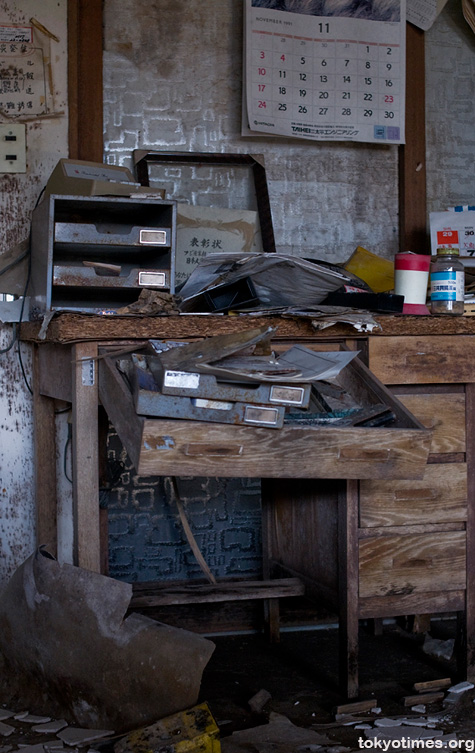
Presumably once belonging to the facility’s manager, it almost certainly hasn’t been sat in front of for the best part of twenty years, and yet it still feels almost used — private even. Especially so knowing that whoever held the position — and with this being Japan we can at least safely assume it was a man — unfortunately suffered from the occasional stomach complaint.
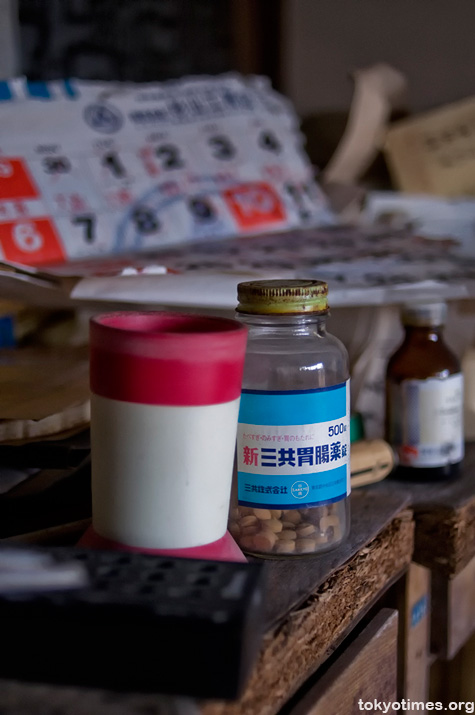
But whereas he may once have talked to somebody about it, or mentioned it in passing during a phone call, it will never happen again. At least not here.
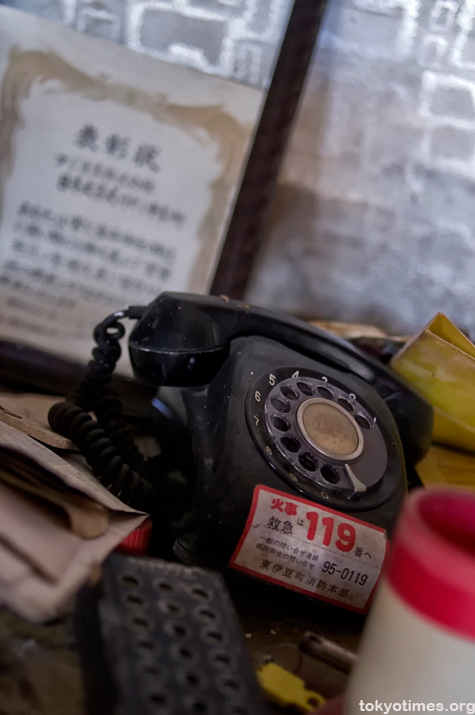
Likewise, no messages or mutterings will be relayed through to reception either.
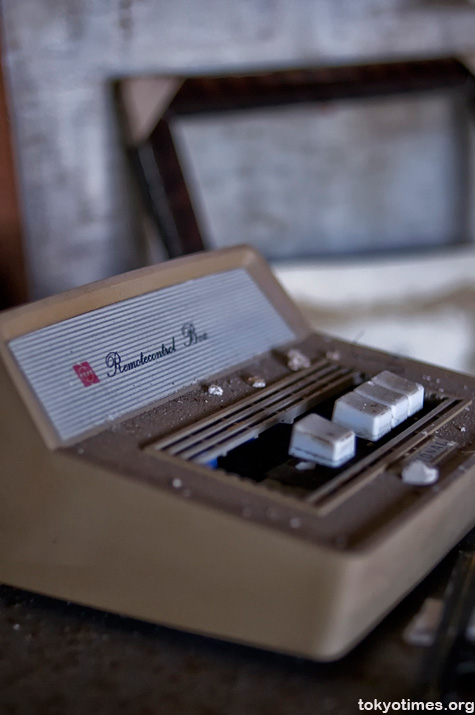
And similarly there also won’t be any talk of his other,
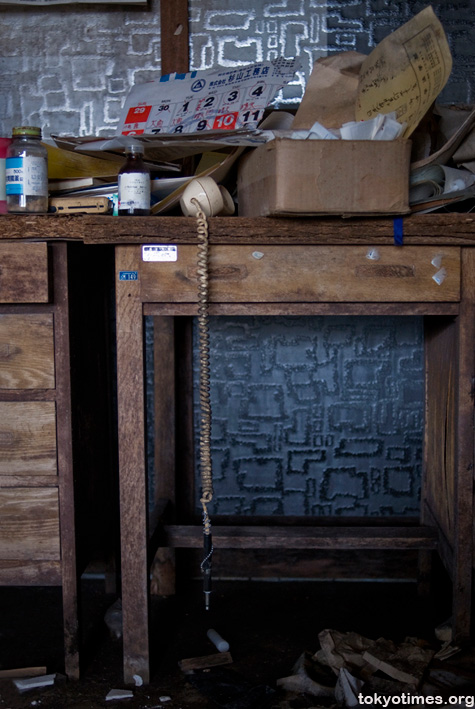
rather more mysterious ailment.
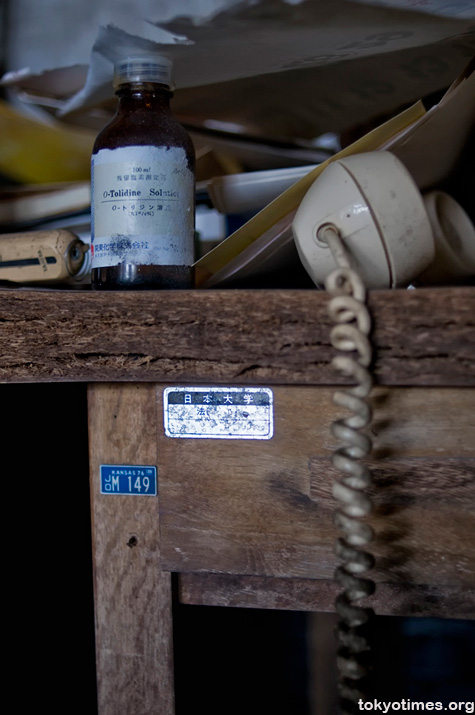
Although this somewhat incongruous Felix the Cat pencil case may, or indeed may not, have briefly kept his mind off it.
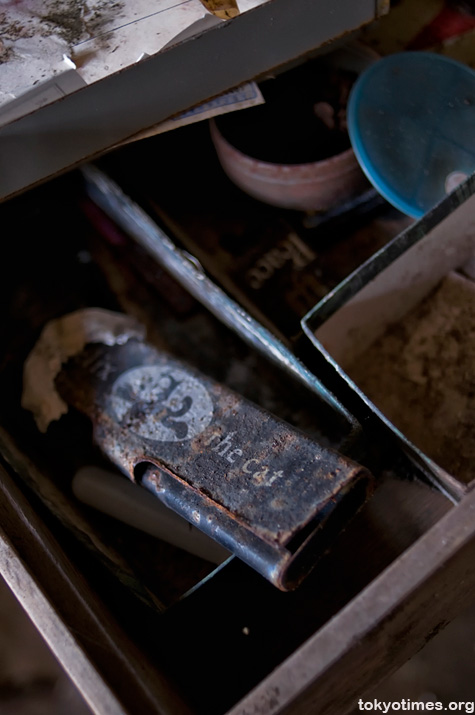
Jason Collin Photography says
Lee, I’m with you about liking the ability to see people’s personal lives from the recent past in haikyo. It’s a kind of polite invasion of privacy, the way I see it. I like the story you told and showed about the person who worked at that desk having stomach problems. No exaggeration and no need to make anything up about the haikyo to spruce up your writing, just factual observation that to me at least, was quite interesting. You still told a story, but it was appealing because it was true and took a bit of clever observation to deduce.
If you hadn’t named the pencil case as a Felix the Cat one I would not have noticed, and I’m glad you did, that certainly dates this desk, and the fact it looks to be a metal (?) case too?
I look forward to more haikyo stories like this.
Oh, and any thought of taking those pills for the black market, i.e. those briefcase-sized tables outside Shinjuku and Shibuya stations that boast to sell pills of questionable effectiveness?
Lee says
Glad to hear you liked it Jason. I wanted to try something a little different, and I’m quite pleased the way it came out. Given enough material, I’ll definitely be tackling this sort of approach again. No doubt about it. The great thing with this kind of haikyo, for me anyway, is that despite finding a few details and snippets of information, there’s still so much mystery and countless unanswered questions.
And yes, the pencil case was metal. But as for selling on the pills, I think I’ll leave that for those dubious sorts in Shinjuku and Shibuya!
Mike says
Interesting place Lee. I’ll have to take a trip there when I’m in the area next myself 🙂 Speaking of which, when are we due to go a huntin’ for long lost haikyo again? My feet are getting itchy 😉
Lee says
I actually did another haikyo today. A new find that was surprisingly nearby. But yeah, I’m still up for another trip. March would be good for me.
Lizzy says
So fascinating, and still a touch creepy. Those personal items left behind . . . like they fully intended to return the next day. My mind, at least, races with so many scenarios as to why they either didn’t or couldn’t. I, too, am looking forward to more haikyo stories like this. You truly have a gift!
Lee says
Exactly Lizzy. Really happy to hear you liked it.
It’s all those possible scenarios and pondering over what kind of person once worked there etc that make haikyo so fascinating for me. Dates, personal preferences and even names can sometimes be found, helping build an account of some kind, but the full story will never fully reveal itself, which is just how it should be.
Ken C says
The bottle of o-tolidine would have been used for testing water, it is not a medicine.
I love these pics but still cannot understand why so much stuff was just left behind.
Lee says
Ah, so that’s what it is. Thanks for clearing that up Ken.
And yeah, the amount, as well as the sheer variety of stuff left behind sometimes, really is quite staggering.
Brian says
Hi, Lee-
I have been visiting your site for some time. Just as a childhood obsession with Monty Python made me more interested in knowing about England, my youthful days of watching anime has spurred my curiosity about Japan. I love the cultural nuances that are embedded in each of your posts.
One question about your haikyo trips: do you dig through any materials that you find in order to learn more about a location or are you very “hands-off,” only photographing what’s on the surface? I guess I would favor leaving things undisturbed, but it seems like it would be tempting to at least open a drawer or two.
Thanks. I can’t wait to carve out enough time to visit Japan in the future.
Lee says
Thanks a lot for the kind words, Brian. Very kind of you. If you have been to England, did it manage to live up to your Python-inspired imagination?
As for haikyo, I try to leave the places just as I found them, as it’s that sense of the buildings being untouched since the day they were abandoned that fascinates me the most. That said, I do skim through the likes of documents and old photos if there are any to try and piece together some details, especially dates and the like. Plus pictures of the places during better days, and the people who worked/stayed there are incredibly interesting.
Thomas says
Hey Lee,
You did a wonderful series of photos on seminar house !
I had not seen so many interesting things (it is true that the weather was very dark).
Congratulations !
Thomas
Ötli says
A great post, for a magic blog… A kind of time machine ? Read you soon !